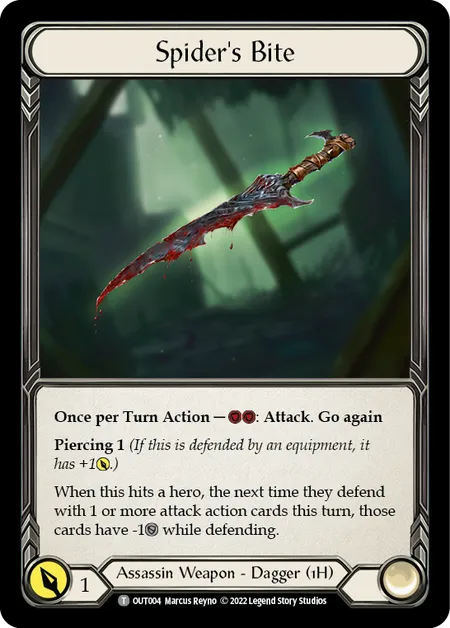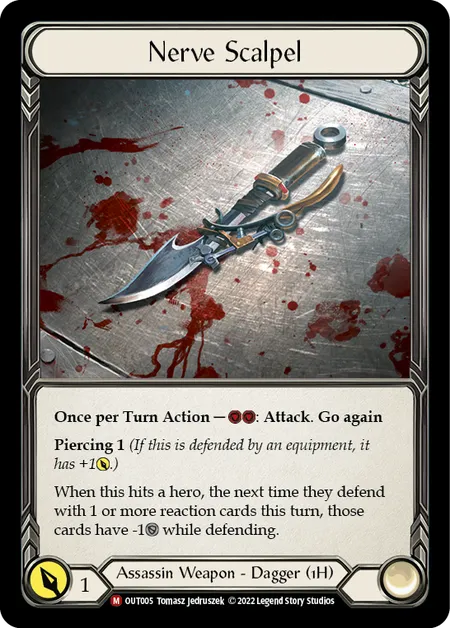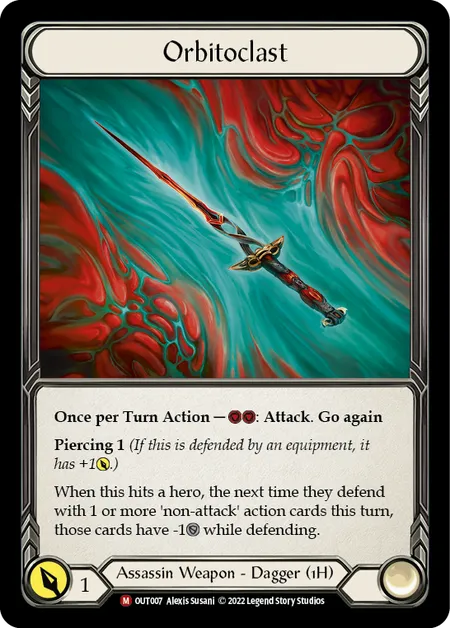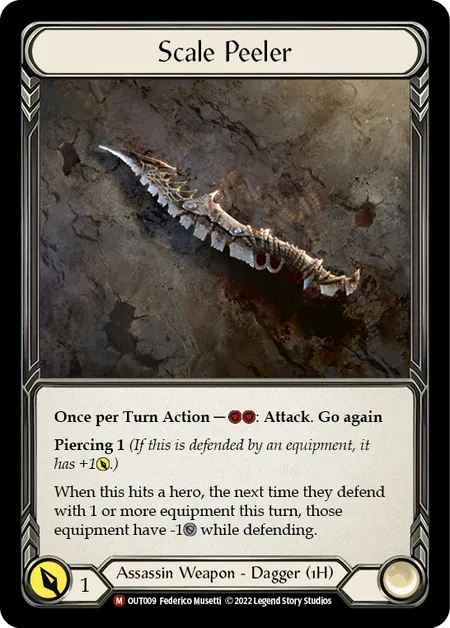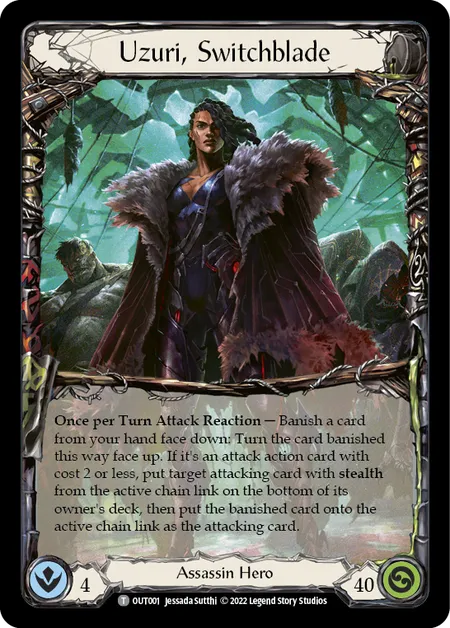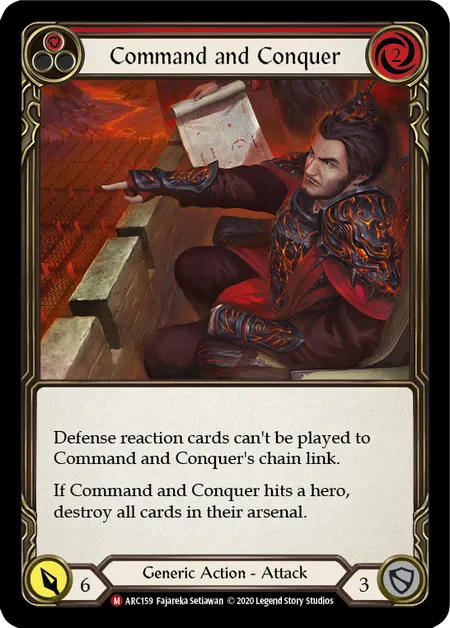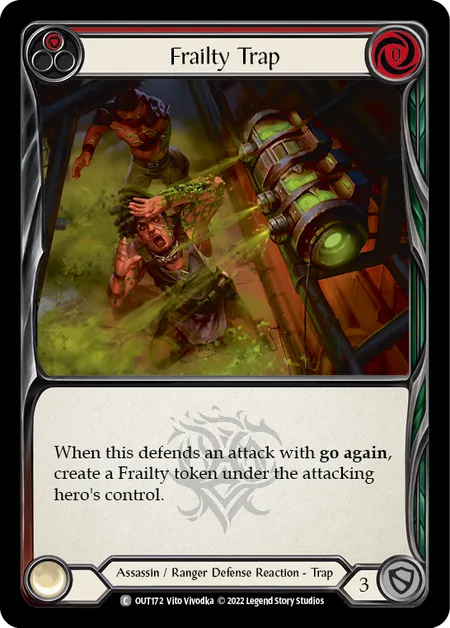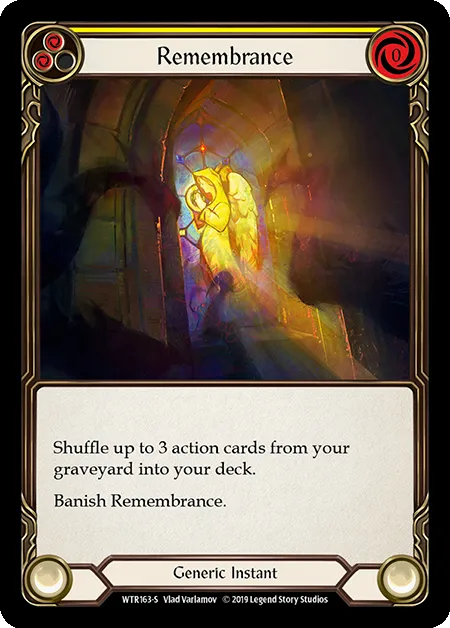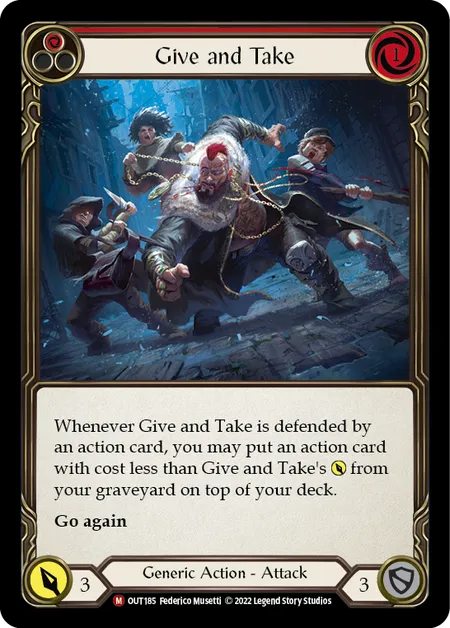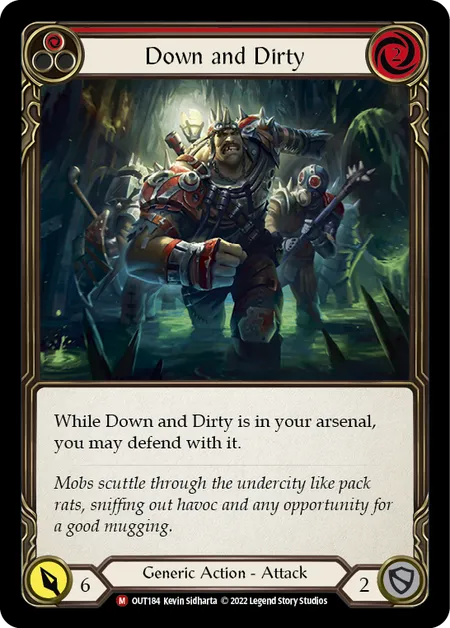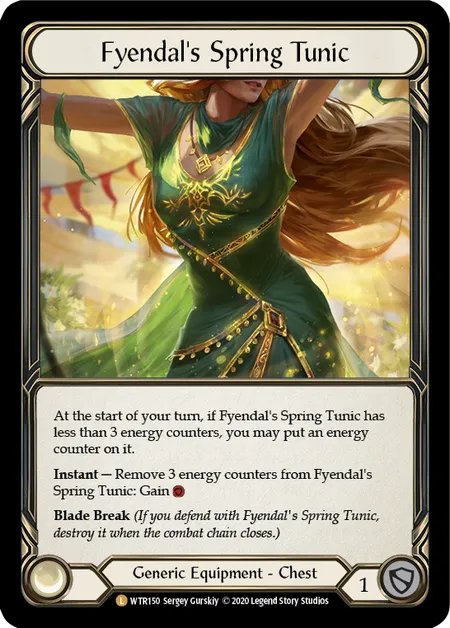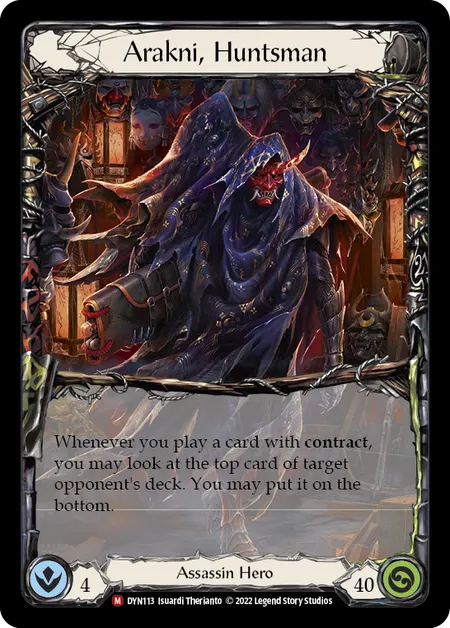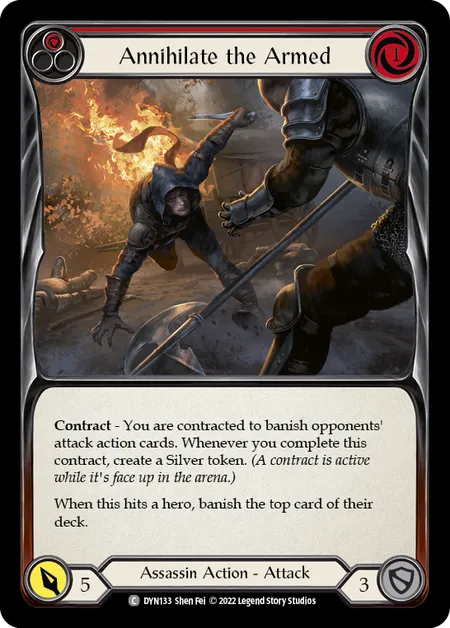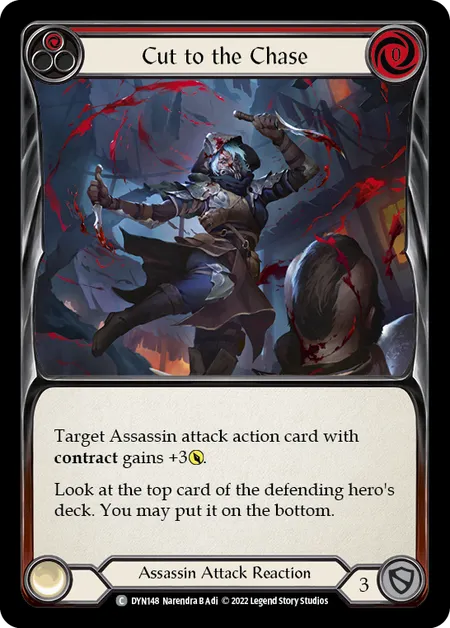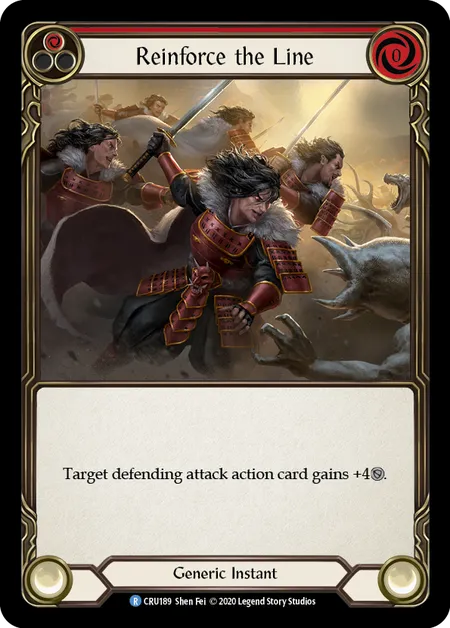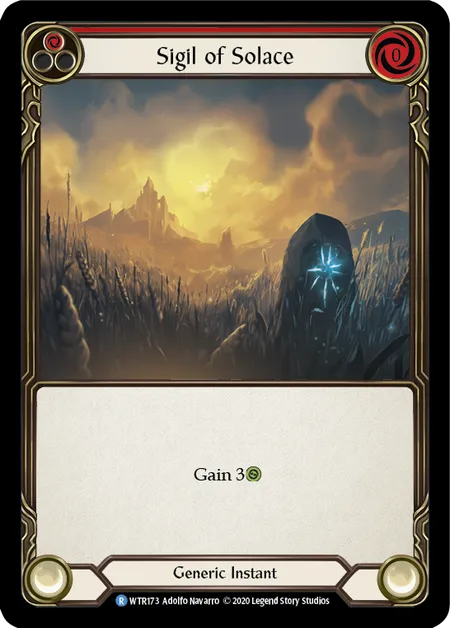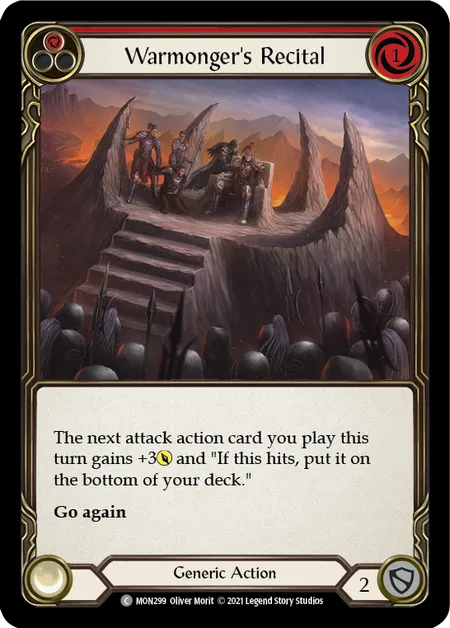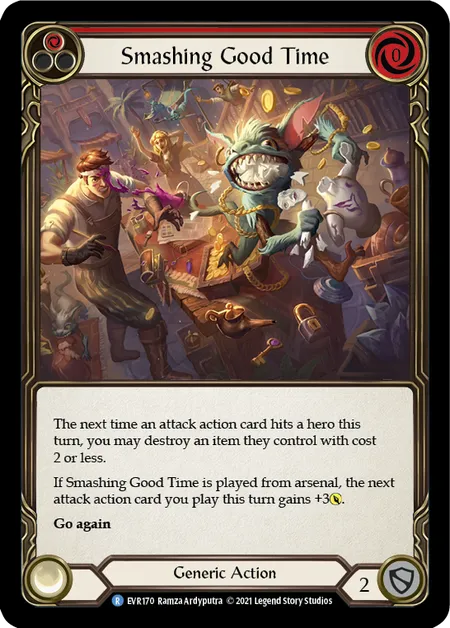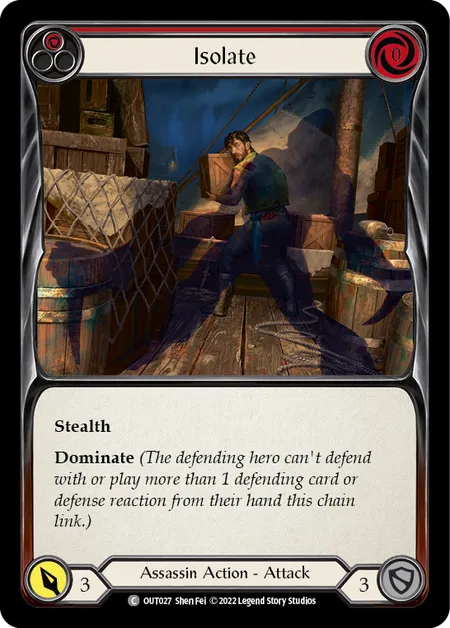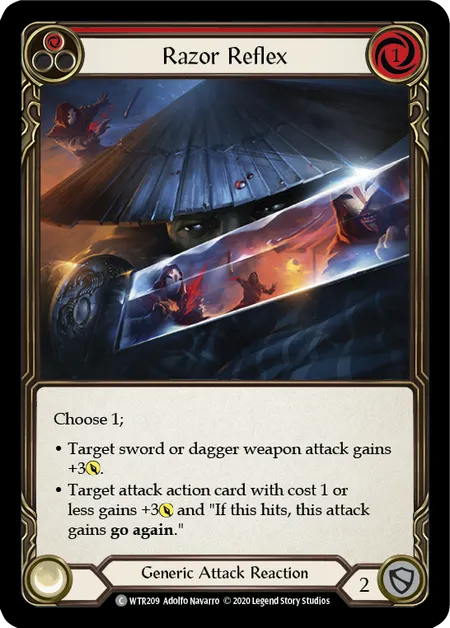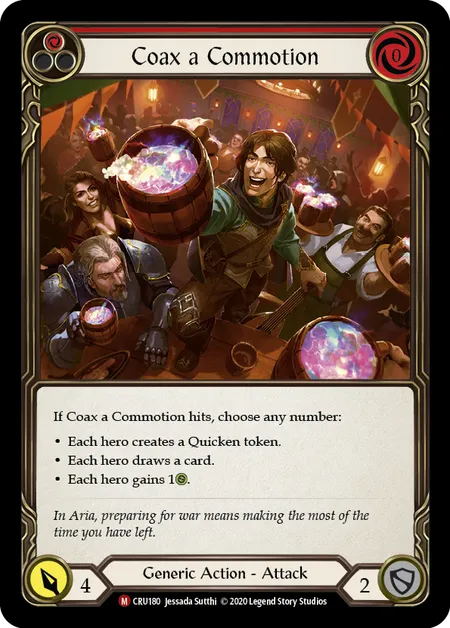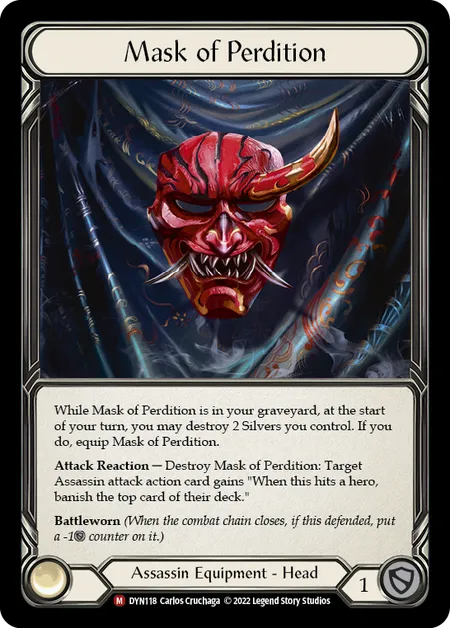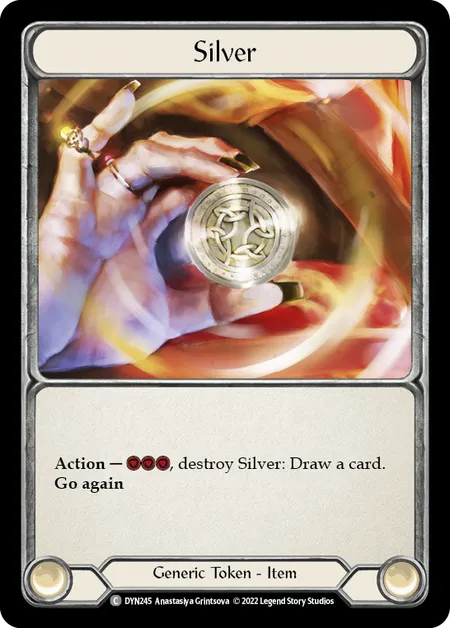Archery not your thing? Not a fan of dragons? Do hammers belong in hardware stores and not your deck? Follow me down this dark path and together we’ll make those pesky heroes truly fear what goes bump in the night.
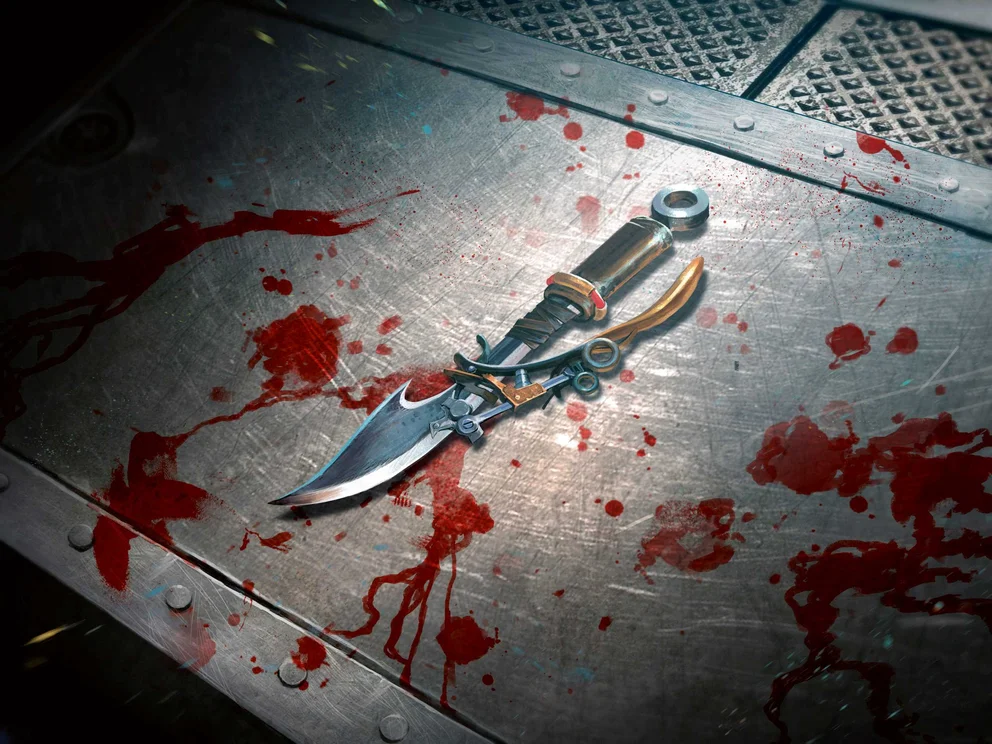
Outsiders has been on shelves for at least a month, and we’ve had a chance to see the world’s top players bring their best to the table. Let’s touch base with our knife-toting friends from the Pits to see how they’re coping, and what their place is in the meta with the Calling: Antwerp and Road to Nationals season just around the corner.
The newest class on the Classic Constructed block, Assassin brings a whole new level of skulduggery to the mix. The general class theme is centered around attacks with deadly on-hits, supported by daggers and unreasonable numbers of attack reactions to ensure you meet your mark and cross the target off the list. Because the on-hits are so important, Assassin plays slower than some other classes, a more similar pace to Guardian and Warrior, where you aim to block efficiently and set up big turns that your opponent cannot properly defend.
Assassins have also reframed the way we think about daggers. We’re used to taking cuts from Kodachis without a second thought, but when each tiny little cut threatens to vaporize our ability to defend a powerful on-hit, we find ourselves thinking twice before scratching the lifepad. Assassin daggers have a very interesting design, because the extra benefits also come with significant drawbacks. Sure, go again and piercing is incredible for pressure, but the cost of 2 resources really changes the math. You can’t approach Assassin with a Ninja mindset, thinking you’ll grind the opponent down with back to back efficient dagger swings - because you’ll quickly realize that keeping two cards to do 2 damage every turn doesn’t cut it by today's standards. Instead, you should look at your daggers as a way to enable your more powerful attack actions, or as a resource dump for extra cards you wouldn’t be able to use otherwise.
Knowing what makes your daggers inefficient is the key to using them efficiently. It’s okay to not swing with a dagger for several turns, and it’s okay to dump one of them using Flick Knives in the first couple of turns of the game. Ask not what you can do for your daggers, but what your daggers can do for you.
Dynasty introduced our first Assassin in the most dramatic entrance possible, and Outsiders has further fleshed out the inventory and paved the way for our second Assassin to make some waves. Both these master murderers share ways to disrupt the opponent’s gameplan, manipulate their deck, and ultimately serve as counters to popular heroes. While they share the same card pool, they do play very differently to each other, and this is due to the pool being largely split down the middle - stealth and contract. Both of these mechanics are splashable, but mixing materials is dangerous and can result in some clunky hands if you try to do too much at once.
Let’s check out what’s made our latest Assassin a major player in the current metagame, and then we’ll look at how our OG killer is faring with all the new toys.
Uzuri, Switchblade
Like any good hero in Flesh and Blood, Uzuri’s ability allows her to interact with a certain portion of the generic card pool. This lets her exploit staples such as Command and Conquer at a time when her own card pool is low.
The most successful Uzuri decks we’ve seen so far tend to focus on maximizing cheap disruption, playing 1-2 card hands that the opponent simply cannot ignore. Isolate into a 2-cost attack action with an on-hit is great, but there’s also lots of 1 card hands you can play, such as Leave No Witnesses, Wither, or Infect.
Unpredictability is the heart and soul of this deck. Presenting your opponent with a piddly blue stealth card, and keeping a defense reaction in your hand that you plan to arsenal can force a double block, allowing you to easily defend their mediocre following turn and crack back in full force. Learn to bluff, keep your opponent guessing, and you’ll gain many opportunities to get mad value.
One weakness is that due to the high number of random stealth cards and 2-cost attack actions, you won’t always draw a clean combination of the two. Sometimes it’ll be clunky hands full of red 2-costs, or sometimes all blue and yellow stealth cards that don’t really impact the game. This can be navigated by thinking about your blocks carefully, and whether it’s worth keeping extra cards for an inefficient turn or giving up tempo until a better window appears.
So why play Uzuri? One thing we saw from Pro Tour: Baltimore is the sheer number of Lexi decks that Uzuri players ate for breakfast. While other decks struggle to move against the onslaught of on-hits, Uzuri is happy blocking out, and as soon as she gets the chance to force a double block from the Elemental Ranger, she can ride the disruption train until Lexi fatigues or is caught by a cheeky dominate or attack reaction.
Frailty tokens are key, so make sure to load up on copies of Wither, Codex of Frailty, Death Touch, and even Frailty Trap. This green meanie makes arrows much easier to soak up, and diminishes the advantage gained from spike turns with Three of a Kind.
Lexi is arguably the most popular hero right now, so taking a solid counter to your local Road to Nationals can land you in some very high places. But be warned, the matchup isn’t foolproof, and you’ll find that some other heroes can be an uphill battle.
Speaking of uphill battles, taking on Oldhim can be quite a mountainous task. Uzuri is great at catching fools off guard, but her damage cap isn’t that high. She can’t consistently string together wide combat chains like Katsu or Fai, and the old man has so many damage prevention measures that a simple 6 power with dominate isn’t enough to eat through 40 life.
You’ll need a gameplan to beat this hero, and it revolves around recycling cards, and having an endgame strategy. Cards like Give and Take, Codex of Frailty, and Remembrance are key to putting back pieces of disruption to use again and again. You’ll also want to pack a Vambrace of Determination along with Scale Peeler to push past Crown of Seeds and Rampart of the Ram’s Head.
If you can chip Oldhim down to single digits, then you can try closing out the game with Last Ditch Effort. There are several ways to utilize this card, and it requires some pitch stacking and a bit of luck to pull off. Remember - Silver tokens have their own ability!
Uzuri has spent a lot of time underground, so the concept of scaled, winged, fire-breathing reptiles is a bit new to her. Dromai has proven to be a rather difficult matchup for the Boss, largely in part due to the lack of efficient ways to clear dragons. You can somewhat mitigate this with the large number of 6-power cards in your deck that act as poppers, but you can’t rely on these alone as Dromai can sidestep using cards like Miragai and Passing Mirage.
You’ll want to focus on clearing dragons as much as possible, which means including cards that have go again like Enlightened Strike, Give and Take, and Looking for a Scrap. Dragons with 2 life can be cleared with 2 dagger swings, but you’ll still need ways to clear the 3 and 4 life dragons. 3-power stealth cards and 4-power contract cards can really help you out in a tight spot.
Another key tech to look at is Down and Dirty, which even Lexi players have started sideboarding. This unassuming generic is an absolute bomb against Dromai, as it allows you to hold a popper in arsenal without clogging your hand, giving you an on-demand get out of jail free card if things go south later in the game. Plus, you can fetch it back with Codex of Frailty in a pinch.
So where do you start with building Uzuri? You’re aiming to draw a stealth card and a threat every turn, so I would start with 12-15 stealth and 12-15 threats that you want to tag in. The rest can focus on reactions, 0-cost cards, go again, tech, or whatever you wish to center your deck around.
It also pays to include a small smattering of contract cards like Leave No Witnesses and Plunder the Poor, but feel free to add more or less if you see fit. Another option is to include some efficient ways to threaten extra damage in the late game, such as the go again cards we’re packing for Dromai, as this can force your opponent to start throwing their whole hand away until you can start robbing their cards with daggers.
Since Uzuri doesn’t need to pitch for 2-cost threats when they’re tagged in with the hero ability, you can afford to cut down on blues. 9-12 is completely fine, but you may want to bump this up to 15-18 if you’re including cards like Pummel.
When playing Uzuri, stay calm and collected. Always look for the best value trade. Be happy to block with every card in your hand if the situation demands it, or take a bit of extra damage to swing with Spider’s Bite if it means your follow-up Command and Conquer will be extra saucy.
You’ll only really need one dagger throughout the game, so using Flick Knives to deal damage with Nerve Scalpel in response to the opponent’s Sink Below is a great way to punish them. Another great value play is to block with Death Touch as soon as you see it, then later play Codex of Frailty to bring it back and play it off a resource from Fyendal’s Spring Tunic. One card for 6 with a range of powerful on-hit choices is huge!
The Boss is clearly not here to play around, and while you’ll have some rough patches in the meta, she has proven to be a powerful counter to some of the most played heroes this season, which makes her a solid pick for the Calling or your local Road to Nationals!
Arakni, Huntsman
We’ve seen a lot less of Arakni recently, and this is because they don’t provide as much disruption as Uzuri. However, Arakni often has a pretty good time into aggro decks, and can still be an extremely fun option to take into battle.
Arakni’s ability is one that I wish we could have explored in the early days of Flesh and Blood, when games ran longer and there was a higher emphasis on control and set-up. Pitch stacking your opponent’s deck could have been a horrifying mechanic in the hands of a trained pilot back in Welcome to Rathe, but it provides a little less overtime value now that most decks hit harder and faster.
Arakni is happy blocking out and playing 1-2 card hands every turn, whether it's Annihilate the Armed off a Tunic resource, or Slay the Scholars backed by Cut to the Chase. Arakni’s damage output is low and slow, so your plan shouldn’t be to attack the opposing hero’s life - you’re attacking their deck.
Staying alive and whittling down the deck size, stripping their power cards, and stacking awkward hands for the opponent is how Arakni wins. Whether it’s stacking reds to the bottom against Dash so she can’t effectively pitch for items in the late game, or digging further for a chance at hitting Art of War off the top against Fai, there’s always a threat involved with contract cards, even if they don’t always spoil the immediate following turn. Silver generation is also very helpful at recurring Blacktek Whisperers and Mask of Perdition to increase the potential threat of your contracts, while also filtering through blues.
The major drawback for Arakni is simply the fresh card pool. Their specialization is highly situational, and a majority of the Assassin support in Outsiders is focused on stealth. You’ll very quickly identify gaps in Arakni’s toolbox, and the challenge lies in filling those gaps with the generic cards available. It can be a mission, but with enough dedication you can pull off the perfect execution, and it is extremely rewarding.
While Uzuri provides disruption through 2 card hands and her hero ability, this can sometimes be a big ask against aggro decks like Fai, Katsu, and Viserai, or decks that demand blocks like Bravo and Dorinthea. Where Arakni shines is complete and utter efficiency. Block everything and play a single 0 cost contract, while saving life with extra defensive tools like Sink Below, Reinforce the Line, and Sigil of Solace.
A lot of these heroes are also easy to generate Silver from, as their deckbuilding follows common trends. For example, you can expect Fai to be running lots of reds, attack actions, 2 defense, go again, and there are contracts that hit each of these. Meanwhile, Bravo tends to run high blue counts, which gives a lot of oomph to Surgical Extraction.
After a while, the aggressive heroes will notice their decks are running thin, the life totals are still pretty evenly balanced, and there’s a fair few power cards in the banish pile. This is when you can step on the gas, and start playing louder hands, as the opponent realizes they actually have to start blocking an Eradicate with a potential attack reaction behind it.
I’m not going to gaslight you - Lexi isn’t a free win for the Huntsman, and matchups like Oldhim and Dromai can be extremely rough. You’ll need heavy tech to have a chance at beating these heroes, mostly focusing on card recursion. Warmonger’s Recital pairs nicely with Give and Take, while Down and Dirty is an absolute must-have when teasing dragons. Oldhim won’t budge against your 4 power contracts so look to combine a dagger swing with 5 power contracts instead. Many of the tech choices we looked at in Uzuri for these matchups can also be applied to Arakni, so double down and give them a shot.
Another main threat you’ll encounter is Dash, and since your gameplan is much slower and quieter than Uzuri’s, it’s incredibly easy for a crafty mech to quickly amass a board of items. You can try using Arakni’s ability to get items on top of the deck and into the danger zone, but if the contract doesn’t hit and they draw the item instead, then you’re pretty cooked. There are a few ways you can try to navigate this matchup, through tucking reds to the bottom of their deck, and also using red Isolate along with Smashing Good Time to try and rid the field of Induction Chambers. Frailty tokens are also once again extremely useful at shutting down a Plasma Purifier for a turn.
Building an Arakni deck is all about balance. You want a surplus of contract, focusing on the 0-cost cards if you’re expecting aggro, and 1-cost cards if you’re expecting control.
As a control deck yourself you want to maximize on 3-defense cards and damage prevention, but it also pays to include some high ceiling cards so that you can actually push some damage back. Enlightened Strike, Razor Reflex, and Coax a Commotion are perfect examples of efficient go again enablers that will allow you to extend your turns when the window of opportunity appears.
You can afford to cut down on blues and focus on high impact cards and tech cards, as you won’t need to heavily pitch throughout most games.
When playing Arakni, patience is key. Play 1-2 card hands, such as a 0-cost contract, using Blacktek Whisperers and Mask of Perdition if it goes unblocked, and following up with another 0-cost contract. If the first doesn’t hit you can simply arsenal the second and you’re no worse off.
Focus on looping your equipment, buying it back with the very Silver it allows you to generate, and exploiting the recurring defense value. Outvalue your opponent and keep taking potshots at their deck, until the late game when you can start swinging taller and wider, and your opponent has to start overblocking to prevent a lethal attack reaction.
Having some kind of endgame strategy to rely on is crucial, whether you’re setting up a monster Codex of Frailty turn, or punishing forced blocks with Spreading Plague.
The path forward with Arakni may be a road less traveled, but for the brave it is a juicy challenge, and depending on what you’re expecting at your local Road to Nationals, it could be the key to securing your seat at the National Championships, or even cutting through a wide field of unpredictable matchups at the Calling!
